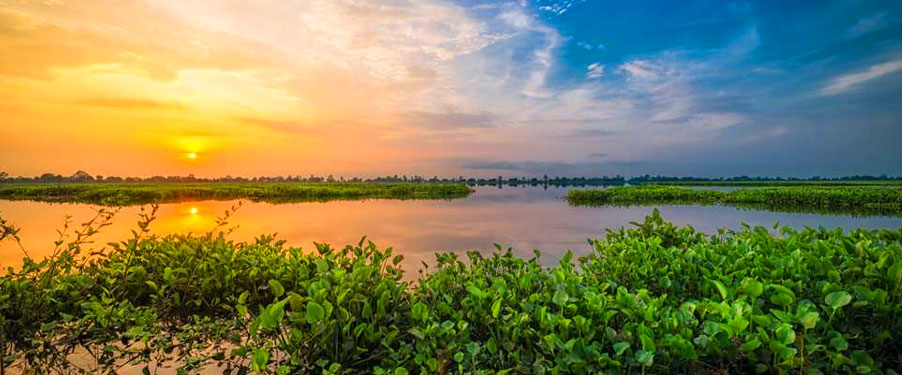Unveiling the Wonders of Manas National Park: A Must-See Sightseeing Destination
By Tushar [30-Nov-23] Nestled in the heart of northeastern India, where the Brahmaputra River winds through the verdant landscapes of Assam, lies the enchanting Manas National Park. Stretching across the borders into the serene realm of Bhutan, this ecological wonderland stands as a testament to the rich tapestry of biodiversity that the Indian subcontinent is renowned for. Designated as a UNESCO World Heritage Site, Manas National Park invites travelers on a journey of discovery, where untamed wilderness, diverse ecosystems, and cultural heritage converge in a symphony of natural beauty.
 A Wildlife Wonderland:
A Wildlife Wonderland:
1. The Royal Residences: Manas National Park is renowned for its charismatic megafauna, making it a wildlife enthusiast's dream come true. The park is home to the regal Bengal tiger, its distinctive stripes blending seamlessly with the dappled sunlight filtering through the lush canopy. The Indian one-horned rhinoceros, a symbol of conservation success, grazes peacefully on the park's vast grasslands, while herds of Indian elephants traverse the meandering paths, creating a living mosaic against the backdrop of emerald green.
2. Avian Extravaganza: For birdwatchers, Manas is a haven with over 450 species of birds, both migratory and resident. The great hornbill, with its impressive size and vibrant plumage, graces the treetops, while the endangered Bengal florican performs its elaborate courtship displays in the grasslands. Above, the skies come alive with the elegant flight of the black-necked crane, a rare and majestic sight that adds to the park's avian spectacle.
A Floral Symphony:1. Botanical Diversity: Manas National Park is a botanical treasure trove, boasting a rich variety of flora that adds to its ecological significance. From the vibrant hues of orchids to the delicate fronds of ferns, the park's diverse ecosystems – ranging from subtropical broadleaf forests to wetlands – harbor a wealth of plant life. Medicinal plants, intertwined with the cultural heritage of the region, further contribute to the park's botanical diversity.
2. River Rhapsody: At the heart of Manas lies the eponymous river, gracefully meandering through the park's expanse. The Manas River not only lends its name but also provides a lifeline to the myriad species that call the park home. Visitors can embark on tranquil boat rides along its gentle currents, offering a unique perspective of the surrounding landscapes and a chance to witness wildlife congregating along the riverbanks.
Cultural Kaleidoscope:Indigenous Harmony: Beyond its natural wonders, Manas National Park is steeped in cultural significance. Inhabited by the indigenous Bodo people for centuries, the park reflects a harmonious coexistence between human communities and wildlife. The Bodo people, with their rich cultural heritage, offer visitors a glimpse into their traditions, weaving a narrative that intertwines with the rustling leaves and calls of the wild.
Conservation Triumphs:1. A Story of Resilience: Manas National Park has weathered its share of challenges, from political unrest to poaching threats. However, it stands today as a shining example of successful conservation efforts. The park's recovery showcases the resilience of nature when met with dedicated conservation initiatives, and it serves as a beacon of hope for other endangered ecosystems worldwide.
Planning Your Expedition:1. Ideal Timing: The best time to witness the wonders of Manas National Park is between November and April. The winter months offer comfortable temperatures and increased visibility for wildlife sightings, making it an ideal window for exploration.
2. Immersive Activities: Engage in a variety of activities to make the most of your visit. From thrilling jeep safaris that navigate through the park's diverse terrain to gentle elephant.
